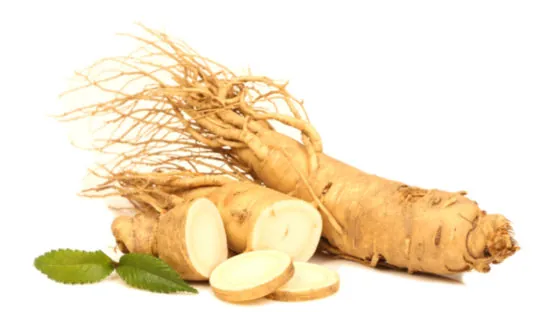A study conducted by researchers at the University of Taipei in Taiwan has shown that the ginseng derivative Rg1 decreases the cellular senescence marker p16INK4a in fitness-trained men 24 hours after exercise.
An experiment to link p16INK4a, aging, exercise, and Rg1
The cell cycle inhibitor p16INK4a, which is also a well-known biomarker of senescent cells, harms the proliferative ability of stem cells [1], substantially limiting their overall effectiveness and contributing to stem cell exhaustion, one of the hallmarks of aging. The researchers, therefore, wanted to determine if exercise, which has known benefits on muscle growth, affected p16INK4a expression and whether ginseng could influence this.
This experiment was relatively simple to conduct. A dozen healthy men with experience in weight training participated in a double-blinded test of 5 milligrams of Rg1 versus placebo, and they received muscle biopsies. An hour later, they performed squat exercises with barbells of roughly their own body weight. 24 hours after that, their muscles were biopsied again, and the cells were examined for biomarkers.
The marker, not the number of cells
In both the placebo and Rg1 groups, the number of cells visibly expressing p16INK4a remained largely the same. However, the amount that was expressed changed dramatically. 24 hours after exercise, members of the placebo group were shown to have their p16INK4a mRNA roughly halved, and this was further decreased in the Rg1 group.
This shows a link between p16INK4a and one of the major aspects of inflammation: an increased number of immune cells inside tissue, namely neutrophils. The neutrophil biomarker MPO and p16INK4a expression were shown to be directly and significantly correlated among the samples taken. The amount of neutrophil mRNA was also decreased in both groups after exercise, although much more dramatically in the group given Rg1, suggesting significantly less inflammation.
The number of endothelial progenitor cells, which aid in the regeneration of muscle tissue [2], was doubled in both groups 24 hours after exercise. Interestingly, these cells were, more often than not, co-located with p16INK4a cells, a fact that this study was not able to explain.
The positive effects of Rg1 were corroborated by a perceived exertion questionnaire. Despite lifting similar amounts of weight, the men given Rg1 simply did not feel like they had worked as hard as the men in the placebo group reported.
Taken together, these results provide even more evidence that resistance-based exercise provides substantial benefits for muscle tissue while showing that Rg1 provides significant benefits relating to inflammation and physical exertion.
Abstract
Background: Stem cell aging, characterized by elevated p16INK4a expression, decreases cell repopulating and self-renewal abilities, which results in elevated inflammation and slow recovery against stress.
Methods: Biopsied muscles were analyzed at baseline and 24 h after squat exercise in 12 trained men (22 ± 2 y). Placebo (PLA) and immunostimulant Rg1 (5 mg) were supplemented 1 h before a squat exercise, using a double-blind counterbalanced crossover design.
Results: Perceived exertion at the end of resistance exercise session was significantly lowered after Rg1 supplementation. Exercise doubled endothelial progenitor cells (EPC) (p < 0.001) and decreased p16INK4a mRNA to 50% of baseline (d = 0.865, p < 0.05) in muscle tissues, despite p16INK4a+ cell and beta-galactosidase+ (ß-Gal+) cell counts being unaltered. Rg1 further lowered p16INK4a mRNA to 35% of baseline with greater effect size than the PLA level (d = 1.302, p < 0.01) and decreased myeloperoxidase (MPO) mRNA to 39% of baseline (p < 0.05). A strong correlation between MPO and p16INK4a expression in muscle tissues was observed (r = 0.84, p < 0.001).
Conclusion: EPC in skeletal muscle doubled 1 d after an acute bout of resistance exercise. The exercised effects in lowering EPC aging and tissue inflammation were enhanced by immunostimulant Rg1, suggesting the involvement of immune stimulation on EPC rejuvenation.
Conclusion
As the researchers point out, one of the study’s major limitations was the single biopsy 24 hours after exercise. They hypothesize that these metrics are different at various time periods after exercise, as irritated muscle tissue is allowed to rest.
However, the results show that ginseng, a compound commonly associated with anti-aging effects in Eastern medicine, has real, quantifiable effects on biomarkers of senescence and stem cell proliferation. We look forward to a study that further outlines these effects over different time intervals and possibly in other tissues.
Literature
[1] Janzen V, Forkert R, Fleming HE, Saito Y, Waring MT, Dombkowski DM, Cheng T, DePinho RA, Sharpless NE, Scadden DT. Stem-cell ageing modified by the cyclin-dependent kinase inhibitor p16INK4a. Nature. 2006; 443:421–26. https://doi.org/10.1038/nature05159
[2] Tamaki T, Akatsuka A, Ando K, Nakamura Y, Matsuzawa H, Hotta T, Roy RR, Edgerton VR. Identification of myogenic-endothelial progenitor cells in the interstitial spaces of skeletal muscle. J Cell Biol. 2002; 157:571–77. https://doi.org/10.1083/jcb.200112106





